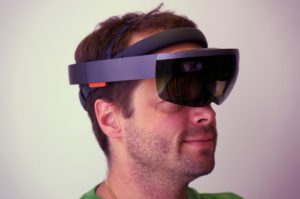Why AR headsets are the true home for AI assistants
 The key here is that computers and smartphones have been designed for interaction through their traditional input mediums: keyboards, mice, touchscreens, buttons. Their applications have also been designed to provide better options and features when the user is directly staring at their display screens.
The key here is that computers and smartphones have been designed for interaction through their traditional input mediums: keyboards, mice, touchscreens, buttons. Their applications have also been designed to provide better options and features when the user is directly staring at their display screens.
How many times do you use Siri on your iPhone every day? Probably very little. And even less on your MacBook. And let’s face it, listening to your email while cooking dinner doesn’t make sense, because you’ll either end up becoming distracted from your email or your cooking (the latter is worse).
In order to make their AI assistants and chatbots more relevant, companies try to broaden their features without taking into consideration the limits of deep learning and neural networks. But some of the promises that companies make are simply not achievable with current blends of AI. Consequently, those features either end up making too many mistakes and frustrating users, or the companies that develop them are forced to hire humans to make up for the shortcomings of their AI.
That’s why the role of AI assistants such as Alexa, Siri and Google Assistant is much more important in smart speakers. The more capable their artificial intelligence is, the more useful the smart speakers become.
But smart speakers are meant for specific environments, in your car, home or office. You don’t carry them around with you.
A recent report by The Information reveals that only 2 percent of the users of Amazon Echo use the smart speaker for shopping.
Here’s what I think: Trying to give AI assistants human-like appearances and characteristics is not a good idea, because it would create false impressions and expectations. Let’s not forget that we’re still in the era of narrow AI, no matter how impressive our achievements have been.
Instead of wasting energy on creating humanoid models to interact with users in emotional ways, Magic Leap should focus on creating an AI assistant that can perform distinct tasks and commands, even if it doesn’t even have a graphical appearance. This is especially crucial for augmented reality headsets, because it’s a mix of virtual elements and the real world. AI assistants should help augment our interactions with the real world, not distract us from the tasks we’re accomplishing.
See the full story here: https://bdtechtalks.com/2018/08/13/augmented-reality-artificial-intelligence-assistants/
Pages
- About Philip Lelyveld
- Mark and Addie Lelyveld Biographies
- Presentations and articles
- Tufts Alumni Bio